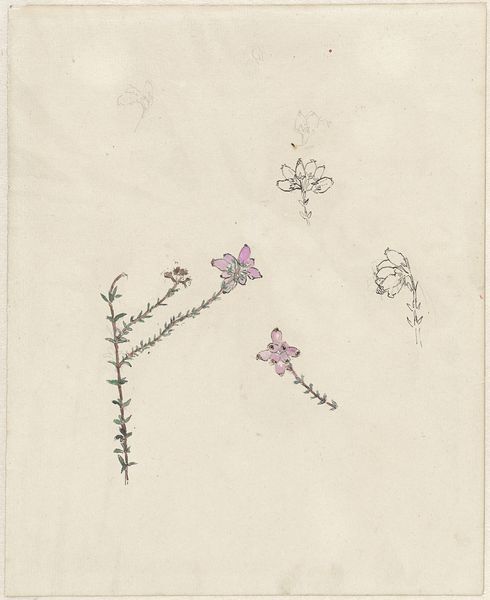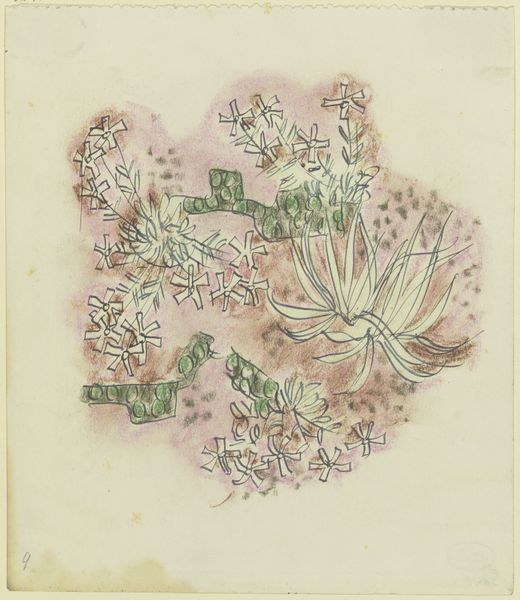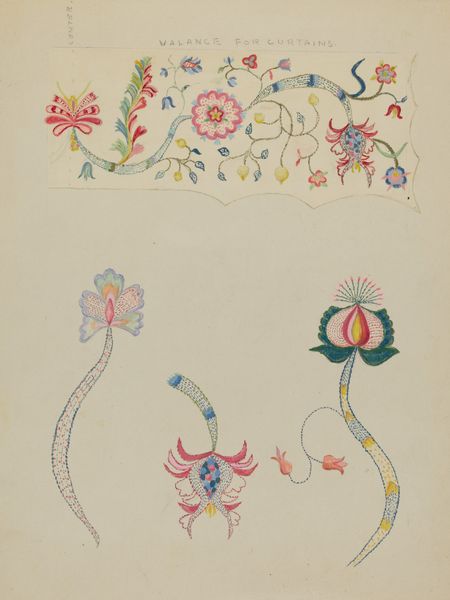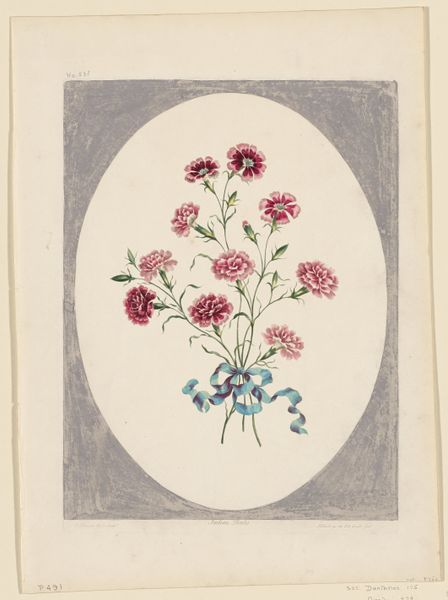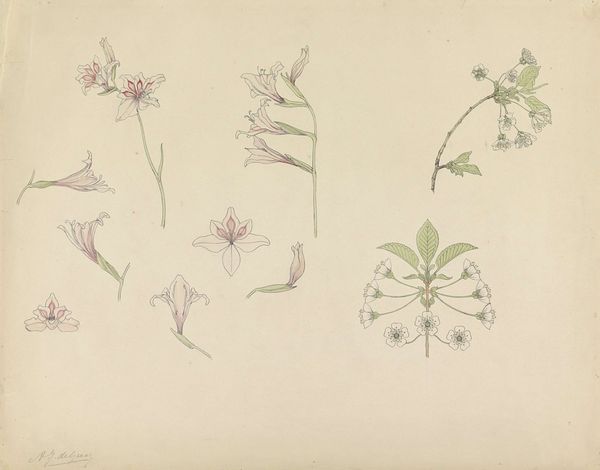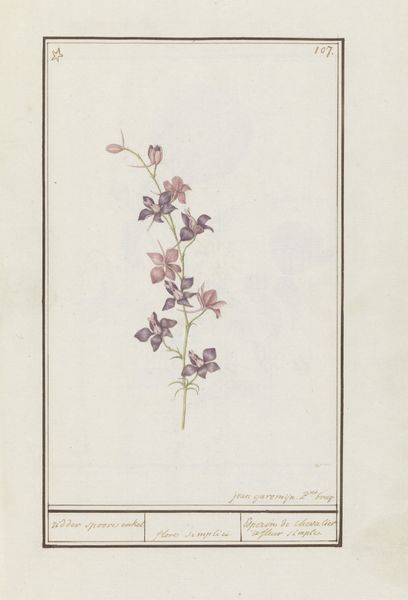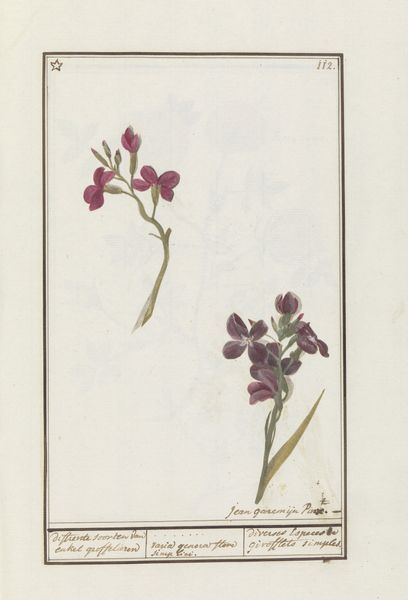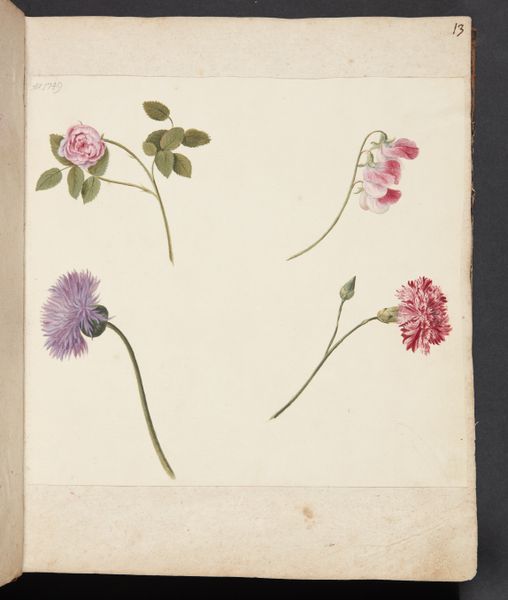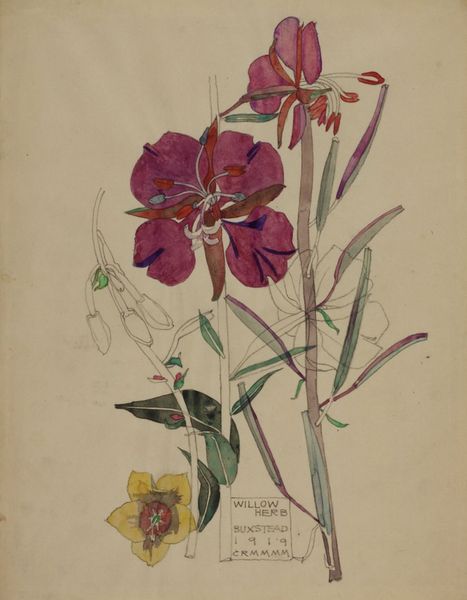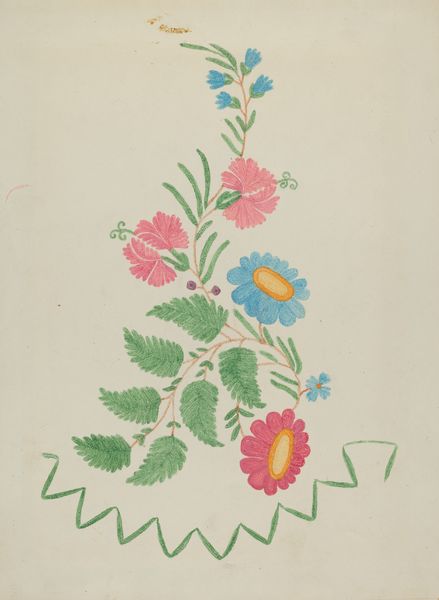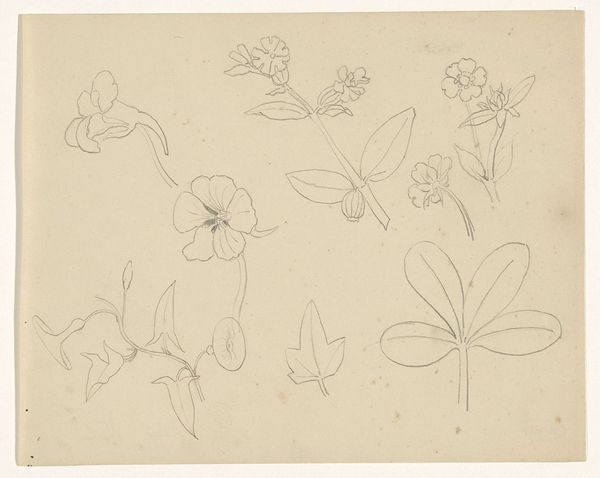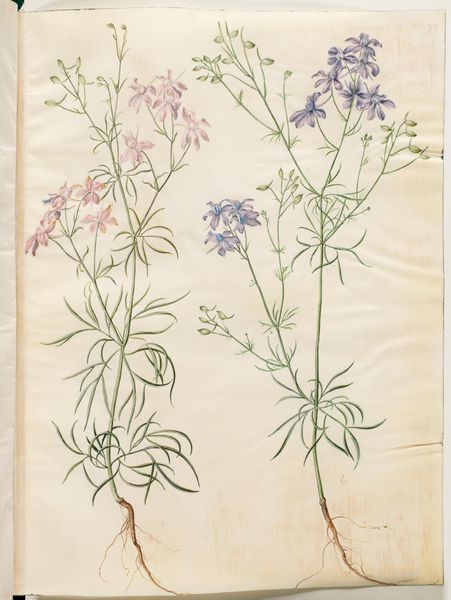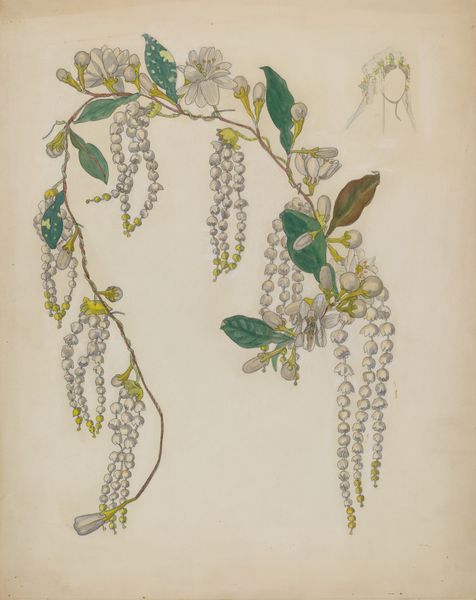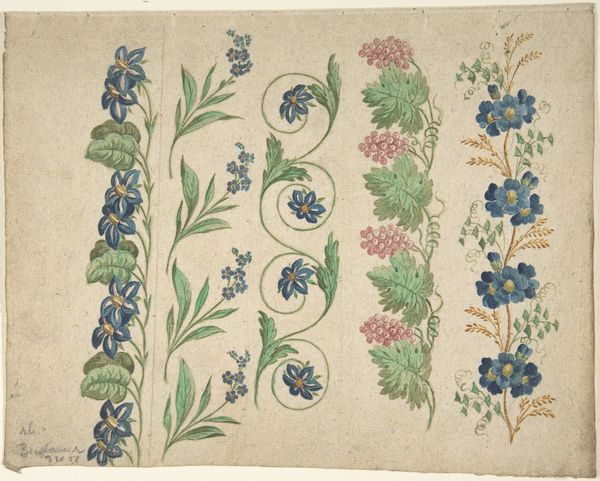
drawing, coloured-pencil, paper, watercolor
#
drawing
#
coloured-pencil
#
paper
#
watercolor
#
coloured pencil
Dimensions: overall: 25.5 x 19.3 cm (10 1/16 x 7 5/8 in.)
Copyright: National Gallery of Art: CC0 1.0
Curator: Fanchon Larzelere created this work around 1936. Titled "Crewel Embroidery," it combines watercolor and colored pencil on paper. What's your first impression? Editor: A certain stillness. It’s almost like a scientific study of different flora, captured with a delicate hand, but rendered incomplete and perhaps even a bit frozen in time. Curator: Yes, I find it compelling how the botanical studies offer a look into a world steeped in traditional crafting practices, like embroidery, but here they're presented in a static, almost diagrammatic way. Editor: Given that these are studies for crewel embroidery, I wonder if this type of visual project empowered women through both self-expression and financial opportunity? Were these embroidery patterns used for mass production? Or were they only made for private commissions? Curator: Interesting questions. We see how needlework, historically a domestic pursuit, becomes a potential avenue for economic independence. These weren't necessarily destined for mass production; embroidery also functioned as a way to pass on knowledge or tradition through the generations. Notice the careful linework. Editor: Absolutely. The rendering itself strikes me. How do you read the impact of a white background within these seemingly organic forms? Is it trying to communicate how each object is distinct, independent of all the others? Curator: The stark white highlights each element, detaching them to accentuate their unique symbolic potential and form. In doing so, the artist gives us a lot to work with—different shapes and hues coming together—without providing us with any further explanation or details. Editor: The precision combined with these soft washes makes me feel a sense of history being carefully preserved but also somehow isolated from its lived context. It hints at tradition while suggesting both absence and silence, but then again maybe the intention was purely functional. Curator: Perhaps it suggests the beauty inherent within craft and folk-art traditions. Each carefully crafted stroke serves to show the symbolic richness present in traditional forms and styles. The details may also evoke emotional memories and provide continuity from one generation to the next. Editor: Perhaps the lack of a wider context actually invites viewers to impose their narratives and memories, thus ensuring relevance for generations to come. It will definitely give people a chance to pause and think. Curator: Indeed. Art encourages all of us to reflect on what's remembered, what's passed down, and what remains unspoken.
Comments
No comments
Be the first to comment and join the conversation on the ultimate creative platform.
